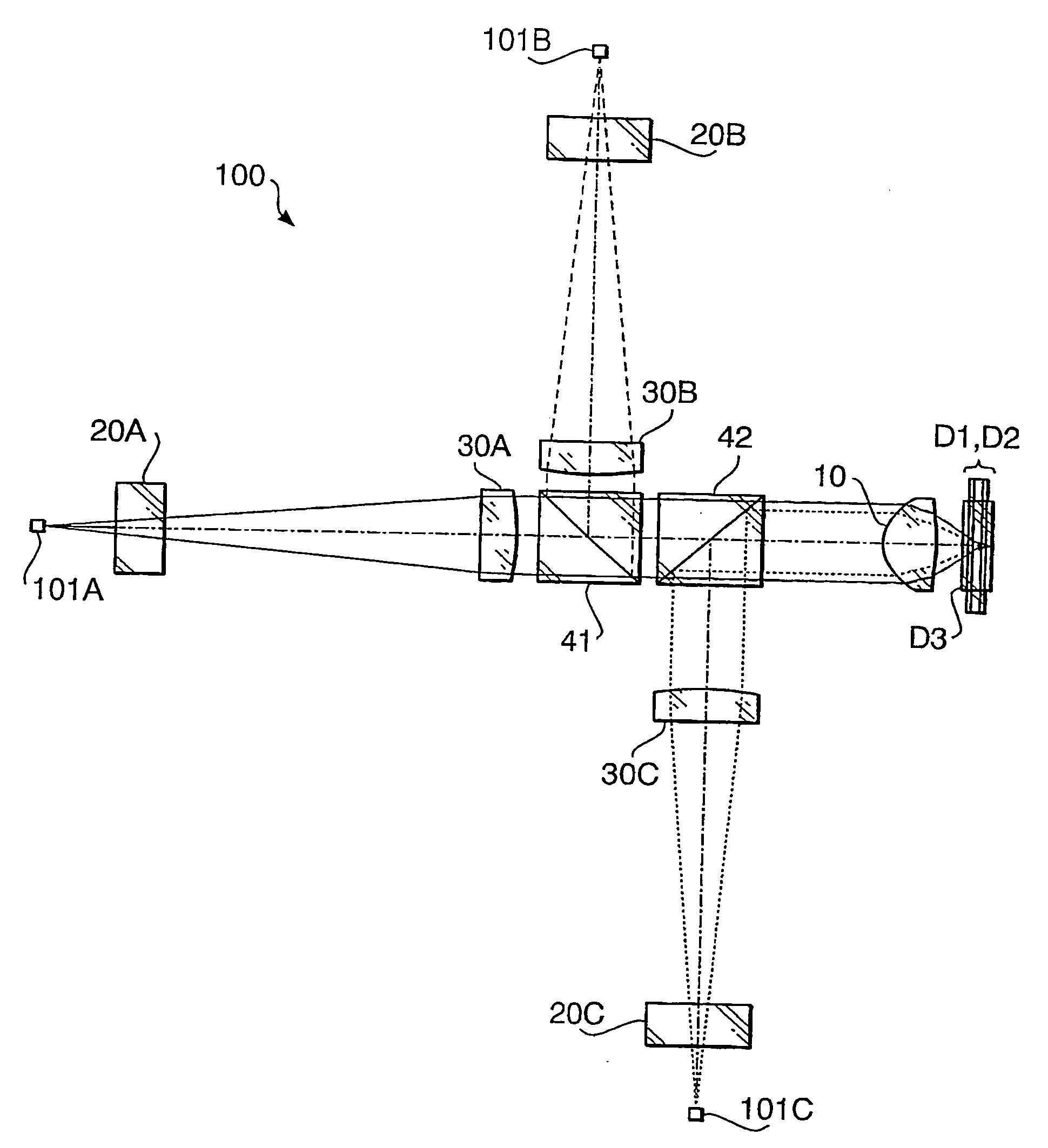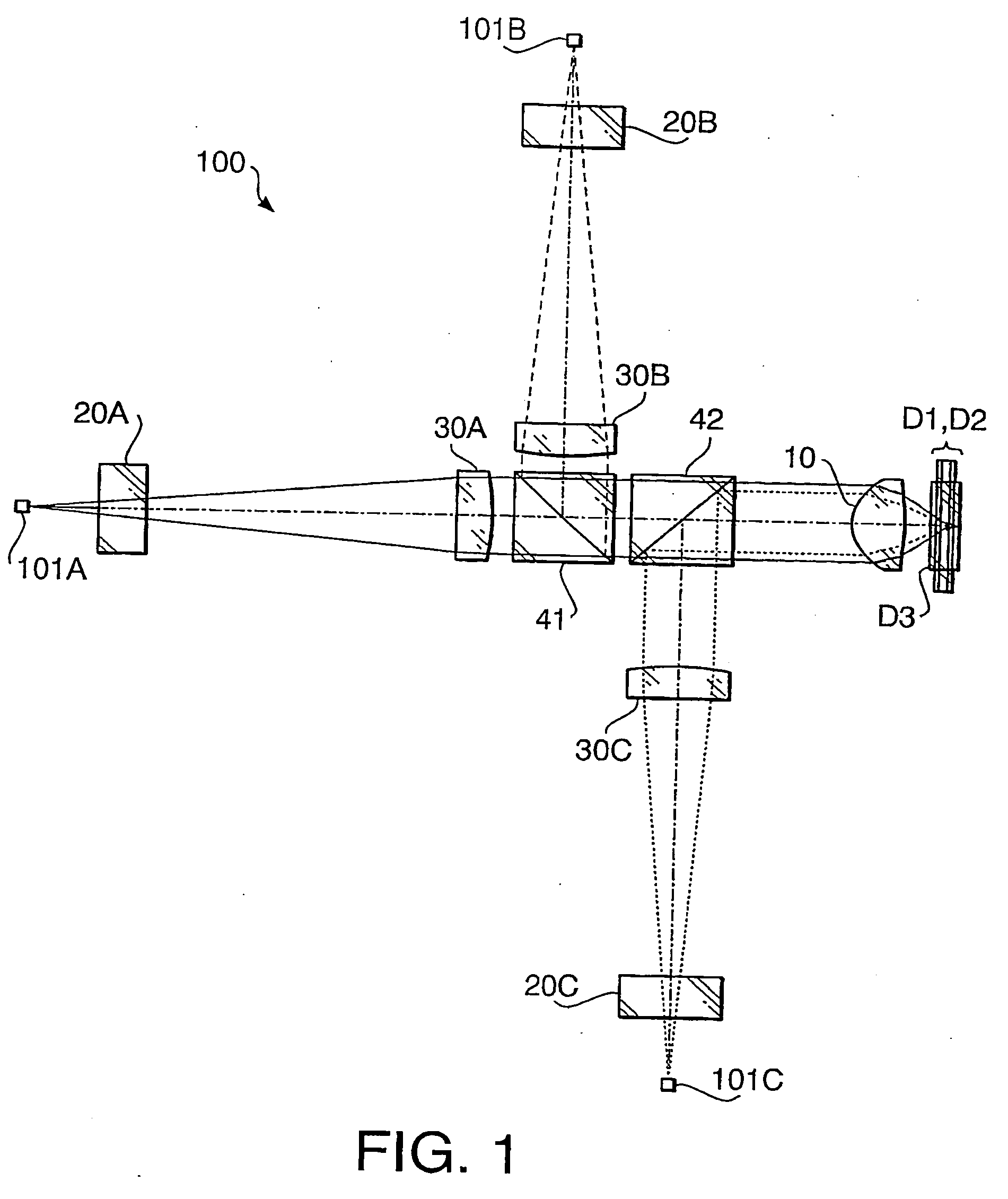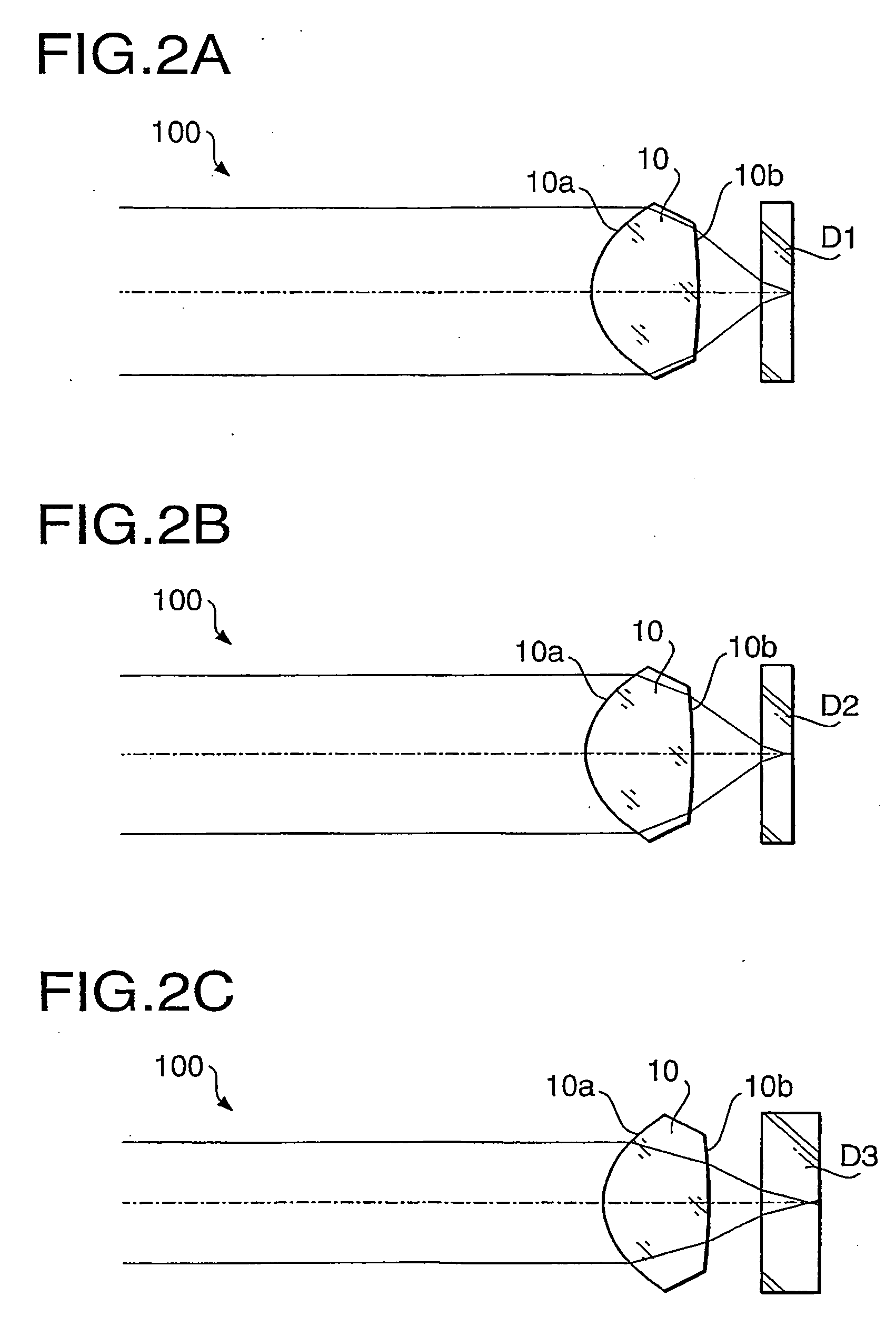Objective lens for optical pick-up
a technology of optical pick-up and objective lens, which is applied in the field of objective lens for optical pick-up, can solve the problem that the objective lens cannot form a beam spot, and achieve the effect of suppressing aberrations insufficient amounts
- Summary
- Abstract
- Description
- Claims
- Application Information
AI Technical Summary
Benefits of technology
Problems solved by technology
Method used
Image
Examples
first example
[0111] The optical pick-up 100 according to a first example has the configuration shown in FIGS. 1 and 2A to 2C. Performance specifications of the optical pick-up 100 and the objective lens 10 according to the first example are shown in Table 1.
TABLE 1First laserSecondbeamlaser beamThird laser beamDesign wavelength (nm)405657788Focal length ƒ (mm)3.0003.0993.118NA0.6500.6000.449magnification0.0000.0000.000
[0112] In Table 1 (and in the following similar Tables), the design wavelength is a wavelength suitable for the recording / reproducing operation of the optical disc, f represents a focal length (unit: mm) of the objective lens 10, NA represents the numerical aperture. In Table 1, the performance specifications are indicated with regard to each of the first laser beam (the optical disc D1), the second laser beam (the optical disc D2) and the third laser beam (the optical disc D3).
[0113] As can be seen from the values of the magnification in Table 1, each of the first to third lase...
second example
[0141] The optical pick-up 100 according to a second example has the configuration shown in FIGS. 1 and 2A to 2C. Performance specifications of the optical pick-up 100 and the objective lens 10 according to the second example are shown in Table 9.
TABLE 9FirstSecondlaser beamlaser beamThird laser beamDesign wavelength (nm)405657788Focal length ƒ (mm)3.0003.0993.118NA0.6500.6290.468magnification0.0000.0000.000
[0142] As can be seen from the values of the magnification in Table 9, each of the first to third laser beams is incident on the objective lens 10 as a collimated beam.
[0143] Table 10 shows a numerical configuration of the optical pick-up 100 when the optical disc D1 (the first laser beam) is used, Table 11 shows a numerical configuration of the optical pick-up 100 when the optical disc D2 (the second laser beam) is used, and Table 12 shows a numerical configuration of the optical pick-up 100 when the optical disc D3 (the third laser beam) is used. In the following Tables 10 to...
third example
[0166] Hereafter, the optical pick-up 100 according to a third example will be described. Since the optical pick-up according to the second example and the optical pick-up according to the third example are identical except for surface shapes of the objective lens 10, the specifications of the objective lens 10 and the numerical configurations shown in Tables 9 to 12 are also applied to the third example.
[0167] The objective lens 10 according to the third example has the specifications shown in Table 9. Therefore, the objective lens 10 according to the third example does not satisfy the conditions (2) and (3). Therefore, the objective lens 10 according to the third example is not provided with the third area 3. Each area formed on the surface 10a is defined as follows by the height h (mm) from the optical axis AX. [0168] Inner area 11 of first area 1: h≦1.11 [0169] Outer area 12 of first area 1: 1.11[0170] Second area 2: 1.46
[0171] As indicated above, in this example, h1a / h1 is 0.7...
PUM
 Login to View More
Login to View More Abstract
Description
Claims
Application Information
 Login to View More
Login to View More - R&D
- Intellectual Property
- Life Sciences
- Materials
- Tech Scout
- Unparalleled Data Quality
- Higher Quality Content
- 60% Fewer Hallucinations
Browse by: Latest US Patents, China's latest patents, Technical Efficacy Thesaurus, Application Domain, Technology Topic, Popular Technical Reports.
© 2025 PatSnap. All rights reserved.Legal|Privacy policy|Modern Slavery Act Transparency Statement|Sitemap|About US| Contact US: help@patsnap.com



